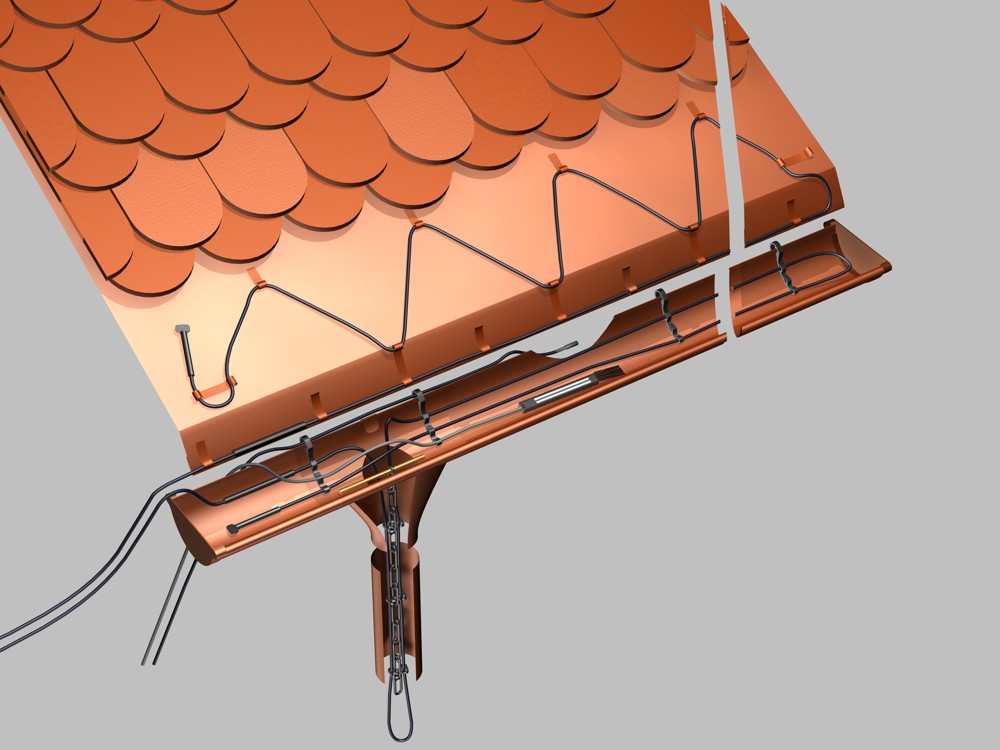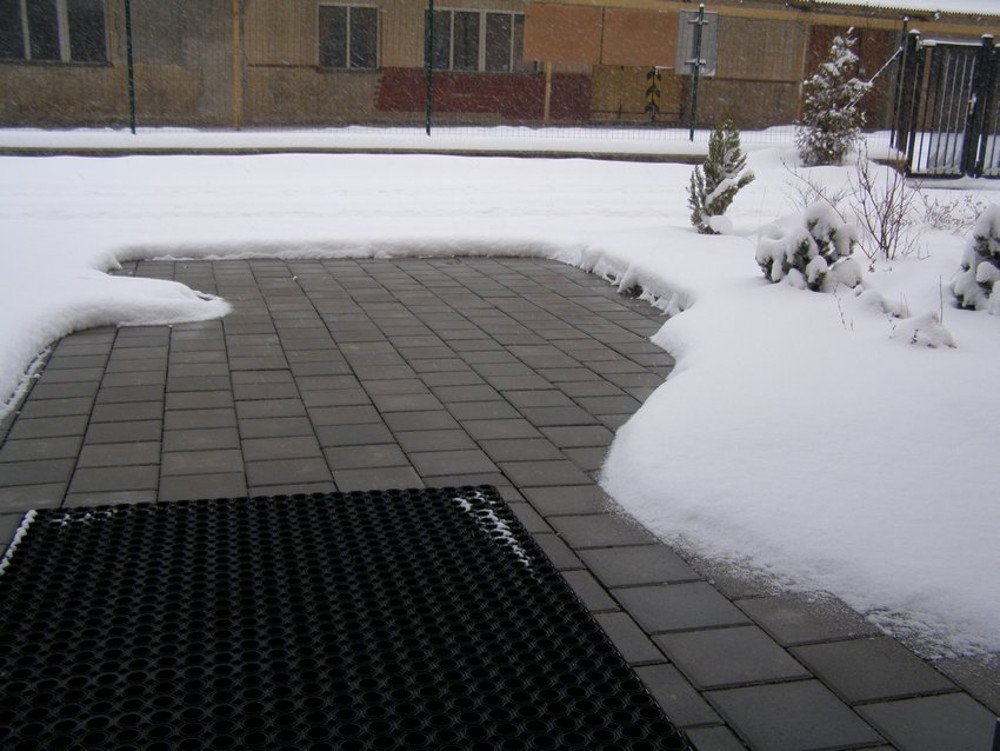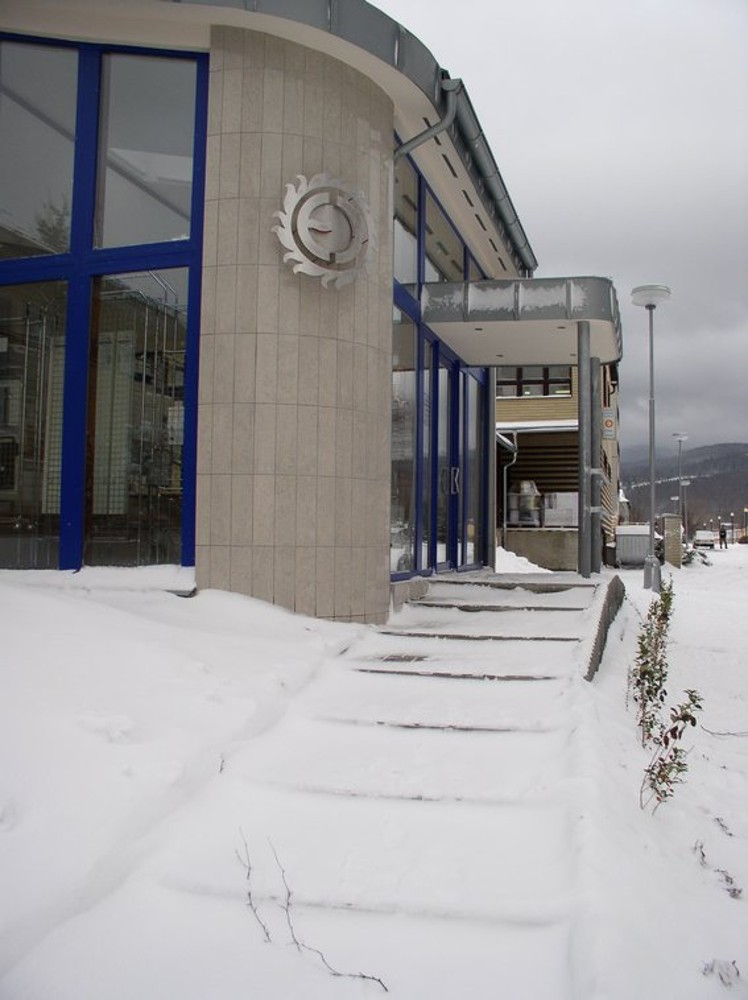
Electric heating cables protect sidewalks and gutters from snow and ice
In the winter months, there is often a need to protect external systems from snow, ice, and frost – most commonly roof gutters, downspouts, and valleys, but also outdoor areas (sidewalks, roads, stairs, etc.). These requirements appear in both private and industrial or commercial applications. Thanks to the simplicity of the solution and practically zero maintenance requirements, electric heating cables ECOFLOOR hold a prime position here.
For cost reasons, resistance heating cables are predominantly used, although self-regulating cables can also be utilized. Resistance heating cables have the shortest length of approximately 8m, so in cases where a short cable is required, self-regulating heating cables may be more suitable. However, even self-regulating cables need to be supervised by a control system. For standard gutters and downspouts (up to a diameter of 150 mm), a heating power of 30-40 W/m is installed, at altitudes close to 1000 m it is then 60 W/m and more (after assessing local conditions). It is more advantageous to use a cable with a lower power output and install it in the gutter or downspout twice, or even three times - this covers a larger area - rather than use a more powerful cable and install just one strand. To secure the cable in the trough and downspout, plastic clips or steel wires with clips are used.
Roofs can also be protected against frost – roof valleys, roof edges, etc. Here, the cable is usually installed in a so-called 'sawing' manner, at intervals such that the surface power output is approximately 200 W/m², and at altitudes close to 1000 m at least 250 W/m². The fixation of the cable on roofs is relatively problematic. Generally, holes cannot be made in the coverings, soldering or welding is also not possible to avoid damaging the insulating bitumen below the covering. Therefore, this problem is addressed individually for each application – for example, using steel wires. An interesting alternative is to glue fixing elements (roof 'C' brackets, plastic strips) using double-sided adhesive tape from 3M.
Heating cables can also protect any communication area – sidewalks, roads, access ramps, stairs, etc. For these applications, special heating cables are used – robust construction with stranded resistance and outputs of 20-30 W/m. Heating can be executed from a heating circuit or heating mats. In pedestrian areas, the heating element is placed in a sand bed or in a concrete slab, for stairs, terraces, etc., in the adhesive sealant. For vehicle traffic areas, it is strongly recommended to place the heating element in a concrete slab, which will protect the heating cable from damage when the area is loaded by vehicles.


For heating outdoor areas, a surface power output of 300 W/m² is installed. Such a high performance is necessary for the system to function properly even at temperatures well below freezing. Proper regulation is also very important, which will activate the heating system as soon as the risk of icing arises. That is, regulation that senses not only temperature but also the presence of moisture in the monitored area. For outdoor applications, regulation can be solved in three ways: |
| Cable in gutter 150 on plastic clips |
 |
| Roof and gutter 'sawing' |
Heating cables can also protect any communication area – sidewalks, roads, access ramps, stairs, etc. For these applications, special heating cables are used – robust construction with stranded resistance and outputs of 20-30 W/m. Heating can be executed from a heating circuit or heating mats. In pedestrian areas, the heating element is placed in a sand bed or in a concrete slab, for stairs, terraces, etc., in the adhesive sealant. For vehicle traffic areas, it is strongly recommended to place the heating element in a concrete slab, which will protect the heating cable from damage when the area is loaded by vehicles.


 |
| Application at garage entrance |
The second option is control based solely on temperature. Using a suitable thermostat, the heating cable is activated when the outdoor temperature drops below a set value. This system is less accurate and reliable, as it cannot react to situations where it is freezing but there is no snow, and the heating cable operates unnecessarily; on the other hand, it ensures that the cable will not be operated at temperatures above freezing.
The last option is manual control – the user activates the cable. With this method, however, there is a very real danger that the system will not function in practice. The result will be not only high operational costs but also a significant reduction in the lifespan of the heating cable if it operates at temperatures above 10°C.
|
|
The English translation is powered by AI tool. Switch to Czech to view the original text source.
0 comments
add comment














